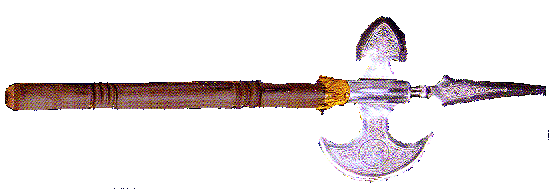|
|
|

|
|
|
|
|
|
|
COMMON AXE During times of war, Kings and local lords would summon all peasants living on their lands and in their fifedoms to military service. As professional weapons and armor was scarce and expensive, the peasant population was forced to use their own ingenuity and resources to arm and outfit themselves. Common farming implements such as picts, pitchforks and axes were used. Though the pict was later modified to have a spike on one side and an axe blade on the other, the pitchfork too saw modification into a weapon known as a trident.
However the common axe saw much use from the Vikings until the late 16th Century. Not only could it smash through developed armor but it also proved adept at severing limbs to overcome and subdue the enemy. |

|
|
|
|
|
|
POLE or WAR AXE As Medieval combat saw more usage of the common axe, the weapon was eventually modified in design to make it easier to handle and more effective. The stubby and thick handle of the original axe was replaced by a sleek pole, usually made of hickory or other strong and durable wood. The blade was also made more narrow for easier control, yet with the combined length of the new handle, its balance was such that it could deliver a more powerful blow upon being swung. Opposite the blade was a steel spike that proved useful in punching holes into platemail armor. Though the War Axe seemed simple in appearance it was by far one of the most effective and common weapons during Medieval warfare. |
|
|
|
|
